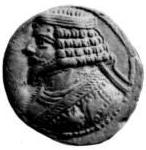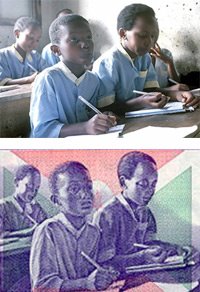
Last week we
noticed that Google has placed Wroth's
BMC Parthia online. Unfortunately, Google blocks users outside the USA from using this work, and their navigation is cumbersome, especially for the plates.
So I've
uploaded the plates to my extended Digital Historia Numorum.
Several years ago I decided to upload the plates cited by Head in the
Historia Numorum, as a complement to that volume. Everywhere Head cites BMC, I made the citation a hyperlink. This style of remixing can still be seen on Head's
Caria chapter.
Adding Google to the mix has allowed me to do things a bit differently. Rather than hyperlinking the references, I am now adding 'BMC' to the navigation bar for each city or ruler. I suspect researchers would rather jump to the first BMC plate and flip through it (although I could do both.) I did this first for the
Egypt chapter.
It's too time consuming to type in or OCR the text, but since Google has already provide it I can link each BMC plate to the descriptions of the coins on that page. This doesn't take much work, and looks nice. For example, see
BMC Egypt plate I.
One of the complaints I've gotten about scanning Head and the BMC is that the references are old, and often wrong. So I've added cross references to Sear's
Greek Coins and their Values and
Greek Imperial Coins. If Sear (writing in the 1970s) disagreed with the British Museum (writing 100 years ago) I include the attribution in Sear. This doesn't take long. It is tedious, though.
Morten Eske Mortensen once claimed no one would cross-reference numismatic works for free, and I wish I hadn't proved him wrong!
For this most recent volume, Parthia, I've also taken the weights and sizes from BMC and converted them from English to metric. So weights are in grams and sizes are in millimeters.
I'll eventually add the cross-references, plate-to-BMC-number, and unit conversions to the older pages. I'd also like to upgrade the image quality on the Google-derived plates, but that is expensive because the only way to get quality plates is to scan first editions, and once I acquire a first edition of BMC I can't bear to sell it!


